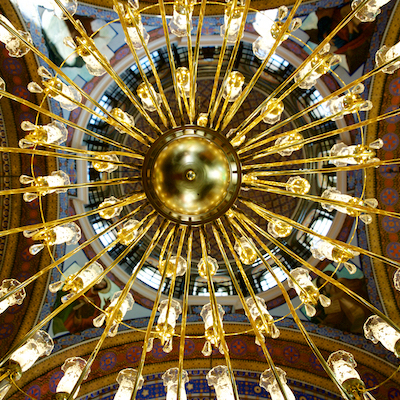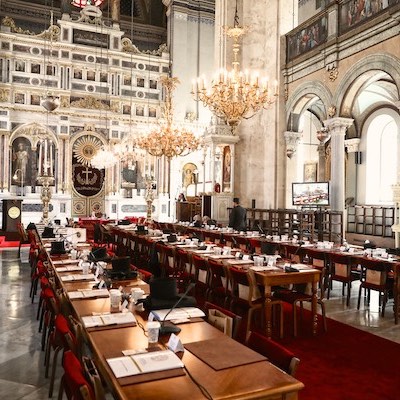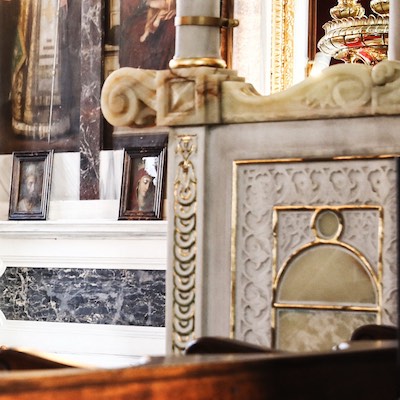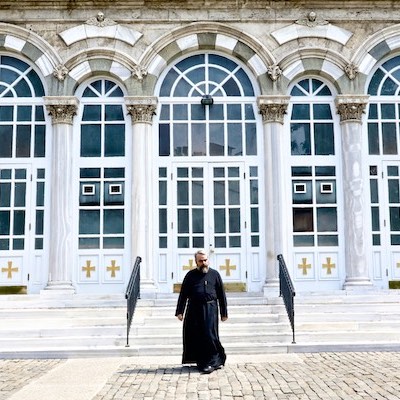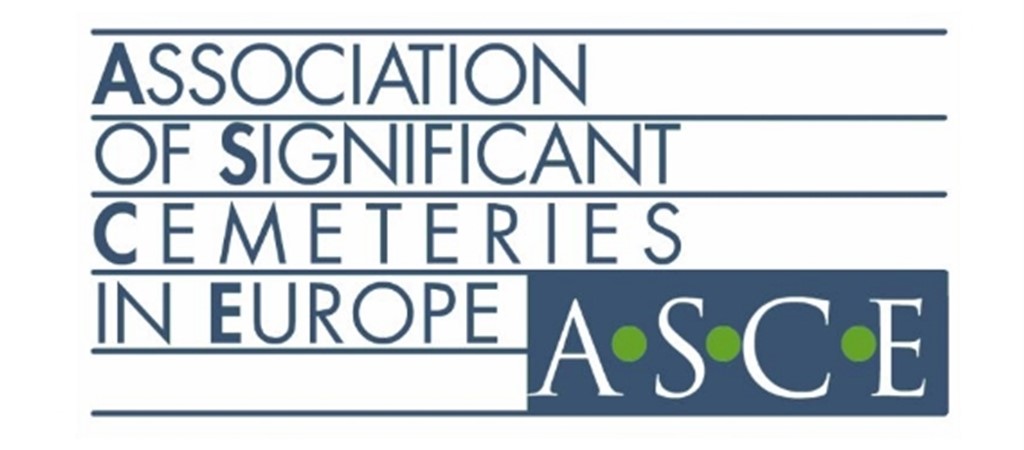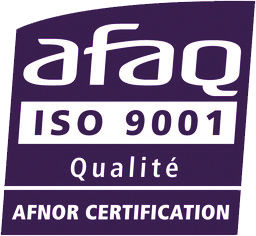History
In Istanbul, capital of the Ottoman Empire, the Tanzimat reformers decided to impose order on the fabric of the city. New town plans were drawn up, creating well planned roads, squares and parks; the main streets were lit with electricity and public transport was improved. With the population ever expanding, the Pera area of the city grew. After the 1865 cholera epidemic, sanitary measures were taken to safeguard the city's residents. They included the decision to relocate the cemeteries outside of the centre. It was decided to remove the two large cemeteries located in Pera, the Petit-Champs des Morts in the Tepebaşı - Şişhane - Kuledibi area, and the Grand-Champs des Morts in the Taksim - Ayazpaşa - Gümüşsuyu area as far as Fındıklı, to sites outside of the city’s boundaries. It was also decided not to use the forecourts of churches as cemeteries since practices such as those posed risks to public health. Until the mid-19th century the Greek cemetery had been located just below the area currently occupied by Taksim Square, the site of Agia Triada Church and the Zappeion Girl’s School. There was also a Greek Orthodox Cemetery in the Kurtuluş area. Around 1865 the Greek-Orthodox cemetery of the Stavrodromion Community was transferred from Taksim to Şişli. It occupied a site of 38,600 m2 and was located far from the city, even further than Kurtuluş, on a site which was to become an extensive cemetery. The eclectic style of the Şişli cemetery church, a cruciform, domed building, was erected with the permission of the Patriarchate and an imperial firman from Sultan Abdul Hamit II. The church is dedicated to the Transfiguration of Christ and was erected with donations from the brothers Demetrius, John and Paul Stephanovich-Schilizzi, to the memory of their parents Zannis and Eleni.
The old Byzantine Schilizzi (or Skylitzes) family left Istanbul after it was taken by the Turks and settled on the island of Chios. The family returned to the city in 1821. Zannis Stephanovich-Schilizzi amassed an immense fortune in the city, while also making a considerable contribution to the Greek community in the form of the Zappeion, Palladion, Ioakeimeio Schools and the Phanar Greek Orthodox College, as well as many charitable foundations. Zannis’ youngest son, Paul Stephanovich-Schilizzi, national benefactor, was born in 1842 in Istanbul and died in August 1901 at the family’s summer home in Kadıköy. Paul offered thousands of pounds for the construction of the Chalki (Heybeliada) Theological School, for the Church of St. John on Burgazada island and the Church of St. Nicholas on Büyükada island. Along with his brothers he also contributed to the construction of the chapel at Şişli, offering more than 10,000 gold pounds. The daughter of John, Zannis’ oldest son, who lived in London, married Greek politician Eleftherios Venizelos in 1921 and keeping family traditions alive in 1933 offered Athens the largest maternity hospital in the Balkans, the Elena Marika Iliadi Maternity Hospital.
The Church of the Transfiguration at Şişli was opened on 21 May 1889 by Sophronius, Metropolitan of Nicaea (modern-day Iznik). Alexandre Vallaury, French-born, Istanbul-based acclaimed architect was commissioned to build the church. Vallaury’s works, such as the Istanbul Archaeological Museum, the Pera Palace Hotel, the Ottoman Bank at Karaköy, the orphanage on Büyükada island, Marmara University at Haydarpaşa, the Academy of Fine Arts and various other pavilions and luxury homes along the Bosphorus, known as ‘Yali’, still adorn the city even today.
The mosaics adorning the exterior of the church were assigned to the well-known French painter, conservator, mosaic’s expert and art teacher, Pretextat Lecomte. Pretextat used mosaics to create a unique work in terms of relief and colour, employing techniques used by the Byzantines in the 11th century. The large icon above the main entrance to the Church of the Transfiguration depicts God with the Greek letters “O Ω Ν” and is signed PRETEXTAT 1888. The church was reconsecrated at that spot by the Ecumenical Patriarch Bartholomew on 22 October 2017. The outer walls are adorned by 8 saints, whose names are commonly found in the Schilizzi family: Paul, Peter, Helen, Demetrius, John, George, Stephen and Constantine. The iconostasis (or altar panel) is the work of painter and hagiographer, George Grammandanis from Falatado on the island of Tinos, who was also art teacher at the Zappeion School. His works can be found in the Ecumenical Patriarchate, in the Church of St. George in Kuzguncuk, in the Church of St. John Chrysostom in Kalamış, and in Phanar Greek Orthodox College, which is no longer in use today.
Τhere is an engraved inscription which tells us that:
“THIS HOLY CHURCH WAS CONSTRUCTED FROM SCRATCH UNDER THE PATRIARCHATE OF DIONYSIUS V, FINANCED BY THE SONS OF SCHILIZZI -STEPHANOVICH TO THE ETERNAL MEMORY OF THEIR PARENTS, IN THE YEAR OF OUR LORD 1888”.
The Patriarchal and Synodical Sigil was signed on 9 July 1889. The sigil states that the Church of the Transfiguration of our Saviour was to be a chapel attached to the Church of the Presentation of the Virgin at Stavrodromion. The sigil was signed by Dionysius V, Patriarch of Istanbul, and 11 synodical metropolitans. There is a second chapel dedicated to the Apostles Peter and Paul located at the site of the cemetery, on the extension to the main road, just behind the main church. There is also an ossuary on the western side of the cemetery.
Relocation of the cemetery coincided with the greatest economic boom the Greeks of Istanbul, and in particular those of the Stavrodromion Community, had ever experienced. As time went by, the specific cemetery was transformed into one of Europe’s most imposing and impressive cemeteries, an example of the high point and vanity of the Greek Orthodox community at the end of the 19th century and mid-20th century. It is a real museum of architecture and sculpture, featuring both Western and Ancient Greek-style works. A park displaying the history of a Hellenism now long lost. It contains in one place funereal monuments of well-known, leading lights, noblemen and scholars from the Greek Orthodox community. The intricate funereal monuments were made by renowned artists such as the Frenchman Antonin Mercie, whose works can be found in the Louvre, as well as works by Georgios Bonanos, Michael Tombros, Luigi Giona and many craftsmen from Tinos, such as Lazarus Sochos, the sculptor who carved the statute of Kolokotronis which stands outside the Old Parliament in Athens; and the Lyritis Brothers who made numerous statutes in Turkey such as the statue of Ataturk in Tekirdağ, as well as the architects P. Fotiadis and Panagiotidis, to name but a few. In 1955 Şişli was one of the wealthiest neighbourhoods in Istanbul’s urban fabric, with a strong Greek presence which has not been preserved. Şişli cemetery, a place which commemorates the achievements of the Greeks of the east from a time when they flourished in demographic, economic and national terms, experienced violence and unrest. Many funereal monuments as well as the ossuary were destroyed and the church was set on fire.
In November 2009 the Ecumenical Patriarch and the Greek Orthodox Community of Stavrodromion in Pera took the first steps in what was an ambitious plan: using money from foreign sponsors, with the assistance of the Stavrodromion Parish Council, they began to restore and maintain the first 40 funereal monuments at Şişli. These are unique monuments, reminders of the once large Greek Orthodox population that Istanbul once had, which were sadly left abandoned, to deteriorate and collapse over the years due to the decline in the Greek population and other circumstances.
Expert craftsmen from Greece, from the Antiquities Conservation Department, and from Turkey tended to the monuments, many of which had not just been ravaged by time but had also been defiled.
After laborious, time-consuming work, in 2014 the monuments were fully restored, signalling the start of a new period for the largest Greek Orthodox cemetery in Turkey. That same year, the Ecumenical Patriarch Bartholomew and everyone involved attended two special events held at the Athens College and the Istanbul Lütfi Kırdar International Convention and Exhibition Centre. The documentary “The Dead Die When They Are Forgotten”, a work dedicated to Şişli and its renovation, was screened there. It was directed by Angeliki Aristomenopoulou, with a screenplay by Nikos Michailides, music by Mimis Plessas and narration by Sia Kosioni.







